Feast 10 January | Name Leonie Aviat Beatified September 27, 1992 | |
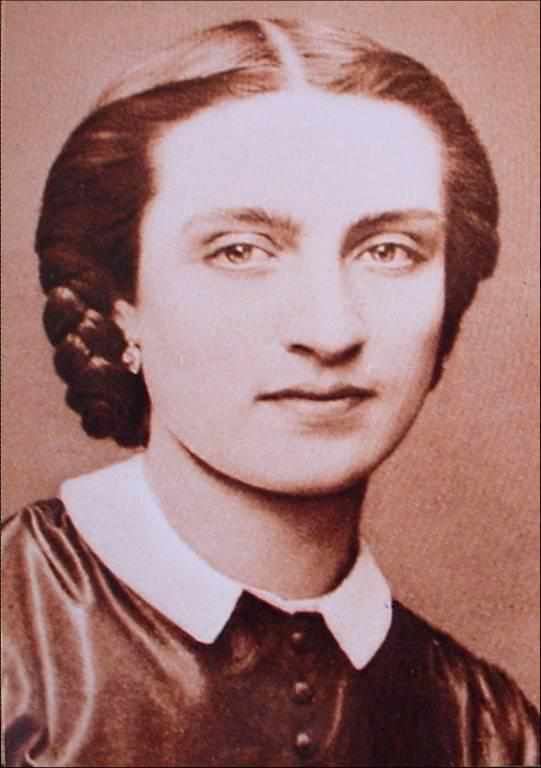 | ||
Born Leonie Aviat16 September 1844Sezanne, France ( 1844-09-16 ) Died January 10, 1914, Perugia, Italy | ||
Venerated in Roman Catholic Church | ||
samy cortometraje de terror unidad educativa leonie aviat
Saint Léonie Aviat (16 September 1844 – 10 January 1914) - in religious Françoise de Sales - was a Roman Catholic professed religious and the co-founder of the Oblate Sisters of St. Francis de Sales alongside Blessed Louis Brisson. Aviat served on two separate occasions as the Superior General for her order though in the interim period between the two terms had to grapple with the disrespect on the part of her two immediate successors. But she nevertheless offered this suffering to God and was held in high esteem among most within her congregation. The nun's sole focus was on those seeking work while attempting to fuse work and faith as something inseparable that leads to greater living and working standards as a right and part of human dignities.
Contents
- samy cortometraje de terror unidad educativa leonie aviat
- Leonie aviat en escombros
- Life
- Sainthood
- Patronage
- References
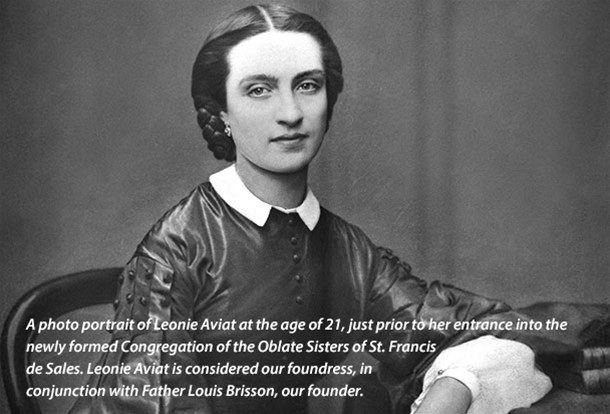
Her death in 1914 prompted all to regard her as a saint and the canonization cause started under Pope Pius XII on 9 April 1957 in which she became titled as a Servant of God while the confirmation of her life of heroic virtue on 1 December 1978 allowed for Pope John Paul II to title her as Venerable. The confirmation of a miracle from South Africa allowed for her beatification on 27 September 1992 while another from the United States allowed for her canonization on 25 November 2001.
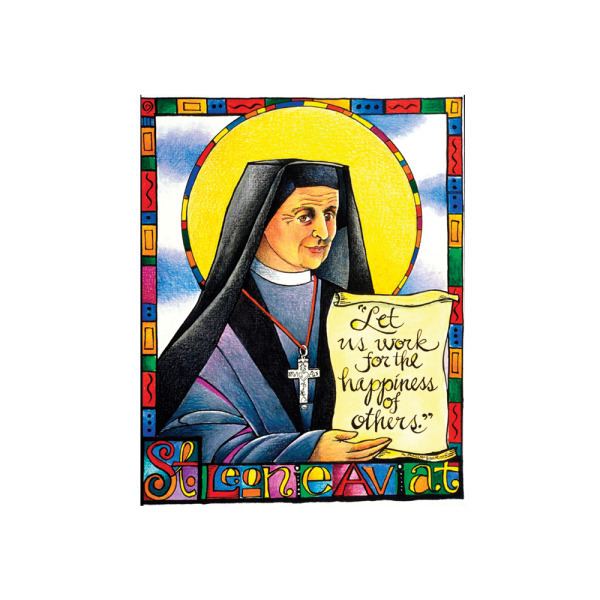
Leonie aviat en escombros
Life
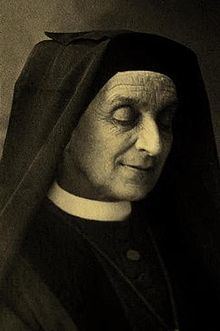
Léonie Aviat was born in Sézanne on 16 September 1844 to the shopkeepers Theodore Aviat and Emilie Caillot; she was baptized on 17 September in the local parish church.
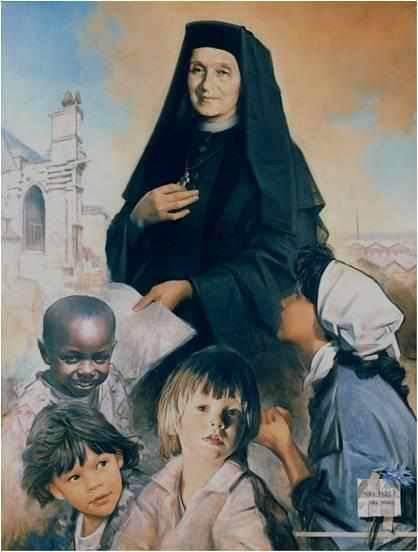
In 1845 she attended the convent school of the Visitation in Troyes as a boarder. But while attending the school from 1845 to 1860 she was taught - and received spiritual guidance - from the Servant of God Marie de Sales Chappuis (the superior) and the priest Blessed Louis Brisson (the chaplain). As soon as she arrived she began preparing for her First Communion and it was proposed to her that she make her first ever Penance prior to her first reception of the Eucharist. The girl made a serious examination of conscience and went to the confessional but was so overcome with emotion that she cried to her confessor who was Brisson. The priest had known her well before she came to the school and to ease her said: "What? So the little girl I have so many sugared almonds to before is afraid of me?" Aviat received both her First Communion and her Confirmation from Bishop of Troyes Pierre-Louis Coeur on 2 July 1856. But her return home in 1860 was far from smooth for her parents wanted her to wed a rich man both happened to like. Aviat disagreed with her parents and announced her intention to become a religious but her father was opposed to this idea. In 1866 she made a spiritual retreat as a means of attempting to make a definitive decision as to her future. Aviat approached both Brisson and Chappuis who advised her to wait and she deemed this to be the will of God. This vocation solidified further when she visited one of the factories where glasses were made and repaired in Sézanne: the sight of the workman doing their jobs under their supervisor inspired her to be with them to counsel and guide them towards God while affirming the importance of their work.
Brisson was concerned about all of the men and women that had moved from the rural areas to the industrialized cities to find work in factories and textile mills. These people were often homeless and so it prompted him to consider the establishment of a new religious congregation dedicated to this. But he consulted with Aviat and hoped that she would aid him in his quest to which she confirmed; she began her path to the religious life on 11 April 1866 and she began on this road with her friend Lucie Caneut who was a former boarding school companion. Aviat and her priest friend together co-founded the Oblate Sisters of St. Francis de Sales on 30 October 1868 and she oversaw the education of these girls. On 30 October 1868 - with Caneut (who became Jeanne-Marie) - she received the habit of the new congregation from Bishop Gaspard Mermillod. It was at this stage that she received her new religious name: "Françoise de Sales". The nun went on to establish parish schools and a female boarding school in Paris while she also guided the workers and kept them hard at work during the course of the Franco-Prussian War while likewise welcoming and aiding all Alsacian immigrants following the war's end. Aviat made the profession of her vows on 11 October 1871 to Monsignor de Ségur. Aviat became the first Superior General of this congregation and served two separate terms in office the first being from 20 September 1872 until 8 October 1879 and she was more than fine with having to vacate the position. There was one occasion during her first term when the religious clothing and profession was set for the feast of Saint Francis de Sales on 29 January 1873 but one of the postulants was struck with a serious abscess in her heel bone that prevented her from attending. The order began a novena to their patron saint and Aviat went to the postulant in the evening of 9 February with a second-class relic of the saint and applied it to the foot which was healed; that postulant said she saw a prelate who applied an unction of oil to her ailing foot.
But the new Superior General demonstrated a clear lack of respect and consideration for Aviat and others began to notice this and even speak of it. But she did not complain nor mention it and offered this interior suffering to God. In 1881 this Superior General resigned after a tenure mired with complications and the new one Louise-Eugenie sent her to the French capital of Paris to run a boarding school at Rue de Vaugirad. Aviat was received with coldness and even indifference in some places but people there soon came to respect her for her commitment to her work and those placed under her ward. On 15 September 1884 her old friend Jeanne-Marie was appointed as Superior General and her attitude towards Aviat was rather unpleasant - this at first proved to be a surprise for it was believed the two were close friends. But Aviat accepted that God had placed the two on opposite sides and spoke little of this to others; in 1889 she was replaced as the head of the Parisian boarding school - despite not liking having to leave - and so returned to Troyes. One night in September 1893 she was in Paris for the order's General Chapter and heard a clear voice stating that she would be chosen as the next Superior General once again. Aviat turned to find she was alone in her room and the next morning she was re-elected as Superior General now understanding that the voice was that of Jesus Christ who wanted to govern the order through her. There was an outburst of happiness at her election for all loved and respected Aviat and her work.
The anti-clerical laws and complete secularization of France in 1905 began with the secularization of the religious houses and the exiling of the occupants. On 11 April 1904 - in preparation of this - she and the other religious transferred their motherhouse to Perugia in the Italian state to escape the anti-clericalism and still manage to function despite her not knowing the Italian language. In 1908 she was in her room and had a terrible foreboding that Brisson was nearing the end of her life and she began to weep. Two religious came to her room and tried to reassure her but a short while later she received a telegram informing her of his condition. Saint Leonie rushed to his bedside and the priest died a fortnight later; she attended the funeral though not in her religious habit so as not to draw attention to herself. The constitutions of the order received papal approval from Pope Pius X in April 1911.
On 26 December 1913 she contracted a high fever that forced her to her bed and on 9 January 1914 her condition deteriorated at a rapid pace to the point where she received the Extreme Unction and then the Eucharist. Her death came due to bronchopneumonia on 10 January 1914 just minutes before 6:00am. On 9 April 1961 her remains were removed from their resting place in Perugia to Troyes to the church of Saint Gille that her order managed; her remains were inspected on 11 April 1961 as part of the sainthood process.
Sainthood
The beatification process opened in 1929 in an informative process that continued until its closure in 1934 while an apostolic process was later inaugurated in 1959 and was concluded later in 1961. Her spiritual writings were put under investigation as was the norm and the theologians approved them on 1 July 1936 as being in line with the faith and not in contradiction of it. The formal introduction to the cause came sometime later under Pope Pius XII on 9 April 1957 and Aviat became titled as a Servant of God. On 14 January 1967 the Congregation for Rites later validated both the informative and apostolic processes in Rome while the Congregation for the Causes of Saints and their consultants issued their approval to the cause on 20 March 1978. The C.C.S. alone met and approved the cause's merits on 23 May 1978. The confirmation of her model life of heroic virtue allowed for Pope John Paul II to proclaim her as Venerable on 1 December 1978.
The process for a miracle attributed to her intercession - and needed for her to be beatified - was investigated in a diocesan process spanning from 1977 until its closure later in 1979. The C.C.S. collected all boxes of evidence from that investigation and validated the process on 3 December 1982 while passing it onto a board of medical experts who approved the healing to be a legitimate miracle that science could not explain on 2 May 1991. Theologians concurred with this decision on 27 September 1991 as did the C.C.S. cardinal and bishop members on 10 December 1991. John Paul II issued the final approval needed for this miracle on 21 December 1991 - confirming it to be an actual miracle - and beatified Aviat on 27 September 1992 in Saint Peter's Square.
The process for another miracle attributed to her - the one for full sainthood - was subjected to a diocesan process of investigation in 1994 and it received official C.C.S. validation on 24 March 1995 before a medical board approved it on 17 February 2000. Theologians likewise voted in favor of this on 23 June 2000 as did the C.C.S. members on 5 December 2000. John Paul II granted his approval to the miracle on 18 December 2000 confirming that Aviat would be proclaimed a saint; the pope confirmed on 13 March 2001 the date and so canonized her in Saint Peter's Square on 25 November 2001.
The beatification miracle came from Cape Town in South Africa and concerned the January 1976 healing of Vincent Kesner who was a child stricken with cancer that had been deemed incurable. The canonization miracle concerned the cure of Bernadette McKenzie (aged fourteen) from Philadelphia in the United States of America from paralyzing spinal disease.
Patronage
The saint remains a patron saint to the Southwest Marne in addition to Aube and Sézanne; she also is a co-patron of the order that she had established
There is a school in Childs that her order established in 1960 and named it in her name in her honor. In Manta in Ecuador the Unidad Educativa Leonie Aviat was created after the order merged the two institutions Santa Esperanza School No. 2 and the Frances de Sales Aviat College.
